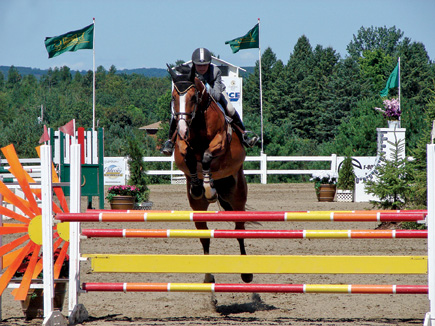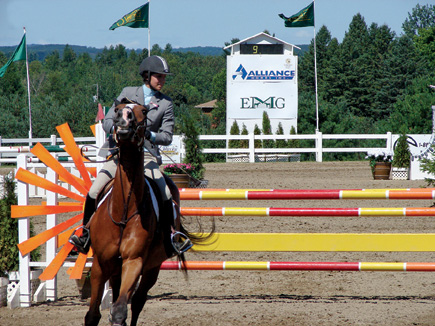Servo Voltage Stabilizer is an high end electronic devices used as indoor and outdoor appliances.
http://www.tsielecpower.com/indoor-automatic-voltage-regulators.htm
Canon's PowerShot S2 IS
A gorgeous camera with a rugged feel and prestigious look, this 5-megapixel
model with 36-432mm f/2.7-3.5 zoom targets the photo enthusiast with a long
list of capabilities. With an optional adapter, the S2 IS will also accept 58mm
filters and telephoto or wide angle lens adapters. The camera is moderately
compact and sports more external controls than most; they're reminiscent
of controls on EOS digital SLRs. My only complaints? The 1.8" swivel/tilt
LCD monitor is a bit small and the electronic viewfinder is only moderately
sharp, although it is bright in most conditions.
When the stabilizer was active, I was able to make many sharp images at 1/60
sec at the 432mm (equivalent) focal length using the most effective option called
"Shoot Only IS." Some of my 1/40 sec images are critically sharp
as well. This makes the PowerShot S2 IS useful for some indoor shooting without
a tripod. In such condition, autofocus is usually reliable but the autofocus
system can be slow at long zoom settings.
The camera shines in outdoor photography, however. Autofocus was quick and reliable
and shutter lag was quite short and virtually zero when I pre-focused on a subject.
Indoors, the PowerShot S2 IS provided the fastest and most reliable focus of
all models tested at moderate focal lengths but slowed at long zoom settings.
Continuous autofocus was quite effective in daylight; it allowed me to make
a sharp series of horses trotting toward the camera. The High-Speed Burst mode
is not super fast at 2.4 fps, but it was useful for making seven Large/Fine
JPEGs in a sequence. Image quality was very high overall, as described in the
comparison chart, with rich colors, high sharpness, accurate white balance,
and snappy contrast.
The Canon PowerShot S2 IS offers numerous functions, including many available
only in the electronic menu; a few of those are not particularly intuitive.
Thankfully, most of the common overrides are selected with the mode dial or
the Function button for great convenience. But if you're a serious shooter
who wants to take advantage of this highly versatile/ effective camera's
full potential, be sure to read the Owners Manual for an appreciation of all
of the available options.

Konica Minolta's DiMAGE Z5
A moderately large but lightweight camera with an oversized handgrip, the DiMAGE
Z5 resembles an entry-level model but it's loaded with capabilities and
a high-grade APO GT 35-420mm f/2.8-4.5 zoom. Many features must be selected
via the electronic menu, with straightforward navigation. The 2" LCD monitor
provides bright, crisp images and the electronic viewfinder is quite bright
but its display is not very sharp. A mechanical Image Stabilizer (called Anti-Shake)
shifts the entire sensor module to compensate for camera movement and it's
certainly effective.
This camera is a bit slow to start up (3+ seconds) but shutter lag is short
in outdoor shooting and focus is confirmed almost instantly. Indoor response
is noticeably slower and autofocus becomes unreliable at very long telephoto
settings in low light. The continuous autofocus system (with "predictive"
tracking focus) was competent outdoors, able to track horses approaching the
camera at consistent speeds. During soccer and equestrian events, the 2 fps
Burst mode seemed slow and the burst depth was only three frames. That--plus
a fairly long electronic viewfinder blackout between frames--made this
camera less than ideal for action photography.
The DiMAGE Z5 produced images that were quite accurate in most respects, with
fairly gentle contrast and moderate sharpness and saturation (except in reds).
All three aspects are easy to adjust in camera or with software. Digital noise
control at high ISOs was a bit below average for this category; I would not
recommend using ISO 320 routinely. Of course, the effective Anti-Shake system
precludes the need for that option in many outdoor situations.
Featuring a novice-friendly design, this versatile camera includes lots of advanced
features and accepts any of several flash units designed for Maxxum cameras.
It's useful for many subjects, but not for long series of sports or other
action. The new
6-megapixel DiMAGE Z6 should produce images with similar characteristics, but
with higher resolution.
 1 |
|
|
|
 3 |
|
 4 |
|
|
Panasonic's Lumix DMC-FZ5
About average in size and weight for this category, this Lumix model with 36-432mm
f/2.8-3.3 lens is quite compact, but the
high-resolution 1.8" LCD monitor is a bit small. Loaded with automatic
features plus advanced capabilities, it's not difficult to operate, thanks
to many analog controls and a highly convenient menu navigation system. Note,
too, that this camera accepts 55mm filters, when using the adapter that's
included. While Panasonic does not offer wide angle or telephoto adapters, they
are available from some after-market manufacturers.
After a 3-second delay for start up, the camera seems fast, with an average
shutter lag of 1/2 sec outdoors and virtually instant response after pre-focusing.
The autofocus system is particularly responsive in High-Speed mode but it slows
dramatically when the nine-point autofocus sensor option is selected. The Lumix
DMC-FZ5 was quite suitable for some action photography--including cars
racing toward my location at consistent speeds--using the 3 fps Burst mode.
The blackout time between frames was shorter than average, so I was sometimes
able to follow a moving subject without losing it during a four-frame sequence.
Outdoors, the electronic viewfinder provided a sharp bright view; while the
display darkened in low light, it allowed me to frame my subjects without difficulty.
Autofocus also slowed in low light, but remained reliable with most subjects.
The Image Stabilizer was a useful amenity, but it's not the most effective
system currently available.
In the 5-megapixel superzoom category, the FZ5 was one of my favorite cameras
for outdoor photography. Aside from ease of use, speed, and reliability, it
generated pleasing images, with rich saturation, high sharpness, snappy contrast,
accurate exposures, and slightly warm white balance. Even ISO 400 images are
quite acceptable. Combining sophisticated Panasonic technology with Leica's
optical expertise, the Lumix DMC-FZ5 should satisfy some photo enthusiasts who
will take advantage of its many capabilities.

Panasonic's Lumix DMC-FZ30
As discussed in our sidebar, this was one of the first superzoom cameras with
8-megapixel resolution and it features a new Leica-designed 12x lens. Larger
than any of the others in its league, it's quite heavy at 1.49 lbs, but
resembles the FZ5 in other respects, with nearly identical controls and menus.
As a bonus, it accepts an optional flash unit, but flash metering is relatively
low tech. Just as convenient to operate as the DMC-FZ5, the FZ30 is definitely
oversized, resembling a compact digital SLR at first glance.

Servo Voltage Stabilizer is an high end electronic devices used as indoor and outdoor appliances.
http://www.tsielecpower.com/indoor-automatic-voltage-regulators.htm